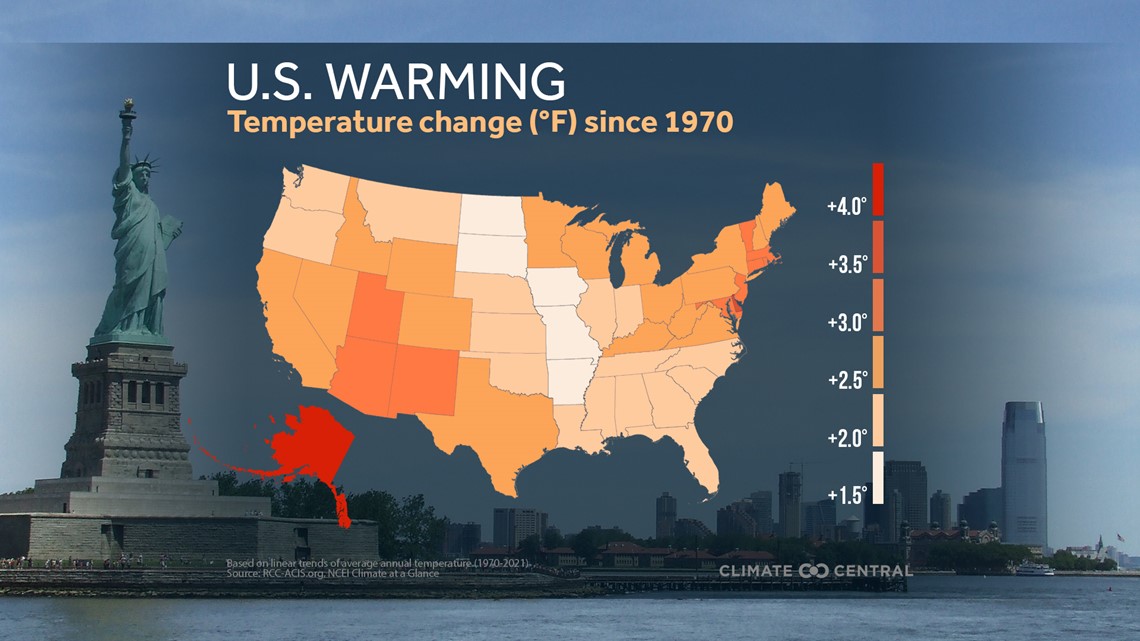HUNTSVILLE, Ala — Happy Earth Day!
Since the first Earth Day 52 years ago, environmental science, policy, and public awareness have transformed in the U.S. and around the world. Earth Day is a time to celebrate this progress and take stock of current challenges—including climate change. The concentration of heat-trapping CO2 in the atmosphere has increased nearly 30% since the first Earth Day in 1970. And when CO2 increases, temperatures follow suit. How has rising CO2 affected temperatures in the U.S.?


Widespread U.S. Warming since the first Earth Day.
Climate Central analyzed trends in annual average temperature in 246 locations, all 49 states (Hawaii was excluded; see methodology), and the entire nation since 1970 and found that:
- The U.S. is 2.6 °F warmer today than it was in 1970.
- For context, 2.6 °F is very close to the global warming limit of 2.7 °F (1.5 °C) that 196 countries, including the U.S., have agreed to pursue.
- All 49 states analyzed have warmed by at least 1.8 °F since the first Earth Day.
- Alaska was the fastest-warming state by far, due to its high latitude. Melting glaciers and permafrost are contributing to sea level rise and greenhouse gas release.
- 99% (244) of 246 U.S. cities analyzed have warmed since 1970.
- 69% (170) of locations have experienced at least 2 °F of warming.
- Many of the fastest-warming locations were in the Southwest—a region vulnerable to droughts and heat extremes, which are likely to worsen with climate change.
The fastest-warming U.S. cities and states based on the increase in annual average temperature since 1970 were:
Curbing emissions to celebrate Earth.
Warming is one of many ways that continued emissions of heat-trapping gasses like CO2 impact our planet, our communities, and our food and water supplies.
Recent IPCC reports review the escalating impacts of climate change on people and nature, and assess ways to limit global warming and minimize further harm to people and the planet.
These scientific reports make clear that staying within the globally-agreed warming limit of 3.6 °F (2 °C) will be an immense challenge—but that the benefits of limiting warming would likely outweigh the costs of mitigation. These reports also make clear that climate solutions already exist for every major economic sector—including energy, transportation and agriculture.

